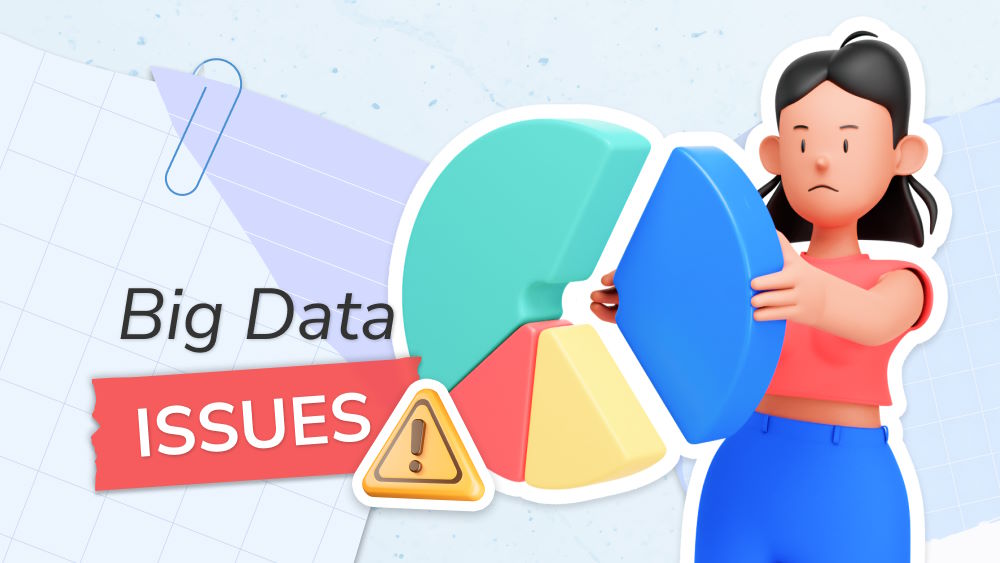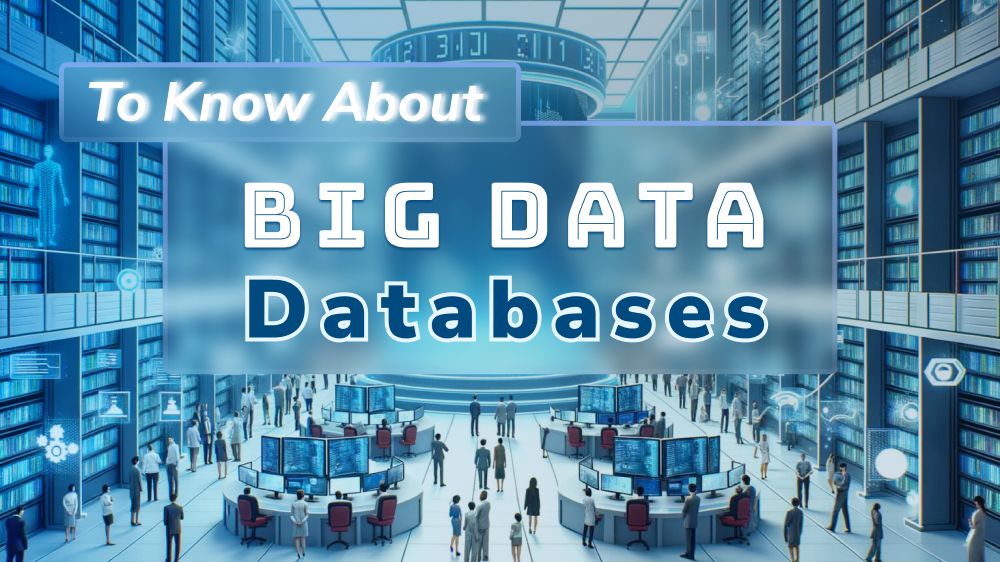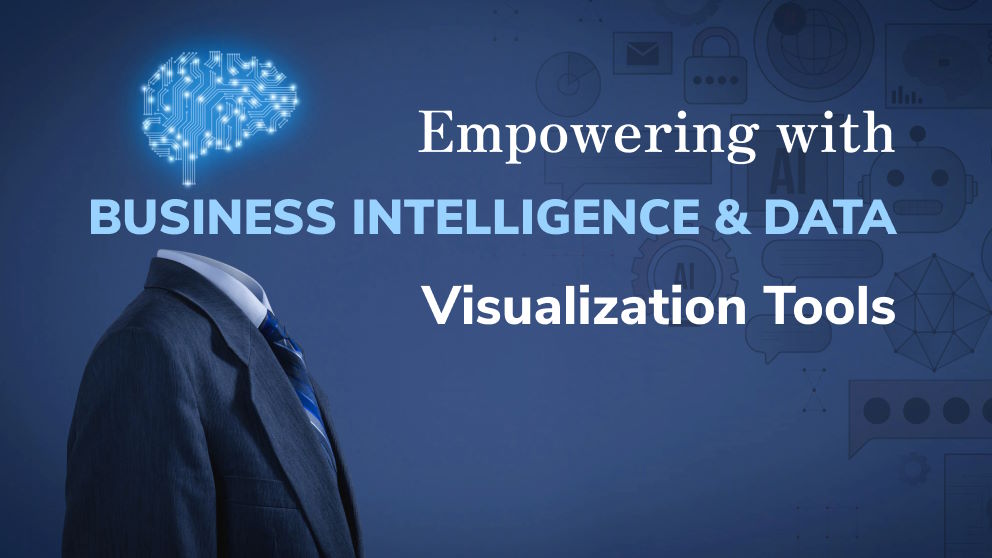Watch Out for the Six Major Big Data Issues

Content Map
More chaptersYou must have heard at least one of the transcendent benefits big data systems bring to businesses, regardless of size. With such an abundance of data sets, big data provides an overall picture of the operation and effectiveness of a software product.
However, the big data environment only contains a huge collection of raw information. You can only benefit from such data when succeed in analyzing and extracting the data into valuable ones. This partly shows the limitations of big data.
Challenges of big data are ongoing. As these data sets grow exponentially with time, it is business task to have a basic understanding of big data issues and overcome their weaknesses before embarking on implementing a big data strategy for internal operation to avoid wasting time and investment budget.
Without mentioning the pros and cons that big data contributes to business development, this article will only cover the nature of this huge data source by focusing analysis on its limitations.
Understanding the Meaning of Big Data
Big data is a concept that refers to the accumulation of an enormous volume of data that is generated from every aspect of daily life, such as your in-used banking app, your visited auction website, or your last trip. It sounds simple. However, because human consumption behavior is ever-changing and the world does not follow a certain trajectory, these massive data sets are provided minute by minute and grow daily.
This growth is so fast and powerful that humans cannot store data and manage data without the help of specialized technology and data analysis tools. By taking advantage of this huge amount of information, big data provides significant opportunities for enterprises to gain needed insights and strengthens decision-making.
Previously, big data had only three core characteristics. However, with the increasing use of big data regardless of the field of activity, two more characteristics are added to the mix and form the complete “5 Vs”.
- Volume: Big data sets can include large amounts of data, from terabytes to petabytes.
- Velocity: Big data arrives quickly and often in real-time.
- Variety: Big data generated structured, semi-structured, or unstructured data from multiple sources.
- Veracity: Big data is not always accurate and reliable due to its high volume and diverse origins.
- Value: If analyzed properly, big data will yield many potential business values.
A Glimpse of Big Data Strengths
Based on the core characteristics of big data, we can easily see the superiority of this massive data system.
Firstly, unlimited data collected from any source, big data gains data pieces from most aspects of life such as social media, IoT devices, sensors, weblogs, transactional data, mobile devices, etc. Thus, with the diverse data landscape, no important information is left out; and humans are the ones that fully enjoy this whole benefit to serve the needs of software product development and optimization of operating systems.
Secondly, thanks to the development of information technology, big data projects today are also used in combination with other technologies such as the Internet of Things (IoT), artificial intelligence (AI), etc. This combination once again makes big data even more powerful. While big data and IoT generate vast amounts of real-time data, big data and AI can be trained on large data sets and make related predictions, especially predictions of potential hazards and upcoming trends. As a whole, these combinations turn out to be the right hand to help businesses quickly respond to emerging trends and suspicious activities, take timely actions, and stay ahead of competitors.
Third, big data generates data automatically at breakneck speed in parallel with the rotation of modern life. How incredible the amount of data that big data produces every minute. While not the only type of data being generated and stored, it is no exaggeration to say that big data technologies certainly represent a significant portion of the data stored and processed in today’s digital landscape. As a result, businesses can now rest assured that big data does its job, eliminating traditional data collection methods, thus saving time and budget on other core competencies that bring profits to the company.
Watch Out 6 Big Data Limitations

Everything exists on two sides, and so does big data. While the potential power is so great, big data also has its own weaknesses that businesses need to pay attention to. Part of the negative aspect of big data arises from its nature. The rest comes from whether the business has enough potential to handle big data analytics challenges or not.
Security Breaches Potentials
Security is the biggest concern of big data. Although big data is used in conjunction with machine language to detect abnormal activities, in billing software, for example, it is itself vulnerable to a bunch of security threats when attracting the unwanted attention of malicious hackers.
In big data, most or all the data that businesses aggregate in a data lake must more or less include sensitive records such as personal information, financial reports, intellectual property, etc. The security of confidential information seems to be an easy task when you only have a small amount of sensitive data. However, things are different for big data due to its large volumes of unprotected data repositories.
You won’t be able to imagine how bad data leakage can affect your business. Mild sensitive data breach leads to financial loss, serious reputational damage, and legal action related to GDPR and CCPA regulations.
If you don’t want to get caught up in the big data security problems above, ensure you have enough system software and specialized security management tools to closely monitor and manage customer data. Don’t push data security for the latest stages; always have backup plans ready for the worst-case scenario.
Data Quality Issues
Big data’s job is to add more and more data-to-data storage. However, the question is, is all generated information accurate data? Unfortunately, the answer is no.
Based on the “Variety” characteristic of big data, we know that big data can come in various forms, from structured data like data databases, semi-structured data like data in JSON format, to unstructured data like text documents. Without cleaning and filtering, big data can experience quality problems as they may be faulty, duplicate, irrelevant, and unwanted data.
So, before using big data for analytics efforts, data scientists and data analysts need to ensure that the information being used is accurate, relevant, and in the proper format for analysis. By fixing data quality issues from the beginning, business gains valuable insights to serve the product development and customer service process, avoiding negative consequences.
IT Infrastructure Hazard
To be able to deal with data growth issues, people definitely cannot use traditional methods or simple IT infrastructure because they have a higher risk of system failures and network crashes. IT infrastructure for big data includes two essential ones, analytical hardware, and distributed storage.
As for analytic tools, the plus point is that businesses have a lot of diverse choices in the market nowadays. However, the downside is that any data handling tool is often expensive and still has its own weaknesses. For example, many organizations use cloud-based analytics to offset the IT infrastructure hazard, but that usually doesn’t eliminate the infrastructure problems entirely. Businesses can fully develop and invest in their analytics tools to customize their desired features. However, the budget and development team requirements are raised, causing many business owners a headache.
For distributed storage, expensive growth is due to increased storage needs. The data collected from big data is raw data. They are only valuable in terms of insights when properly analyzed and resolved. However, businesses cannot analyze all this data overnight as the process often takes a long time. Storage space to contain the data, networking bandwidth to transfer data to and from analytics systems, and compute resources to perform the previous analytics. All of this is the reason why businesses need to invest carefully in advanced infrastructure before intending to leverage big data into internal stages.
Data Scientists Requirement
Big data analytics is a complicated process that cannot be performed without the help of technical expertise - skilled data professionals. However, due to the complexity of data and high business requirements, the technology market in recent years experienced a serious shortage of data science experts.
Specifically, data analytics suitable for big data integration jobs must be experts capable of performing tasks such as identifying and collecting data from sources, cleaning and transforming the data, integrating data into a unified dataset, deriving insights, and informing business decisions. In addition to professional knowledge, they must also grasp new technology trends, understand products, services, and customer behaviors, and clearly use supporting tools to integrate data. All explanations for the lack of qualified experts.
Not only in quantity and making it difficult for HR to recruit, but such personnel also demand high salaries that may not match the enterprise budget. In this case, using software development outsourcing turns out to be a good idea when such services have a large talent pool available and affordable for even startups.
Data Silos
There are a lot of mixed opinions about whether big data causes data silos. However, implementing big data initiatives may lead to new data silos or the increase of existing ones if the business lacks data integration expertise.
Big data does not create data silos itself. The emergence of data silos is the result when an enterprise implements big data initiatives without integrating with existing data management systems or even prohibiting data sharing across different departments.
The immense power of big data is only maximized by those individuals and organizations that apply it properly and have the ability to handle such an enormous system. If you do not want to get into data integration problems, the advice for businesses is to store data in a centralized location accessible to all relevant stakeholders.
Trend Uncatchable
As technology constantly evolves rapidly, organizations are always in a state of readiness to adapt and invest in new technologies to remain competitive and maximize the benefits of big data analytics. This is one of the biggest potential drawbacks concerned by many businesses.
Imagine investing effort and money in one particular trending technology at a time. Unfortunately, it became outdated quickly with the arrival of newer and better technology emerging soon after. At this state, in order to keep a competitive advantage, businesses are forced to innovate most of the processes, systems, and tools. Only when you are ready should you implement big data into your company’s production.
In short, the use value of big data depends heavily on the business tasked with managing and analyzing the data. There is no denying the potential insights that big data brings to businesses. However, it is humans who are truly capable of turning the power of such massive data systems into reality and practices. Hope the above article has helped you have a clearer view of big data. Make sure you have the right facilities, human resources, and backup plans ready to drive business success with big data.







